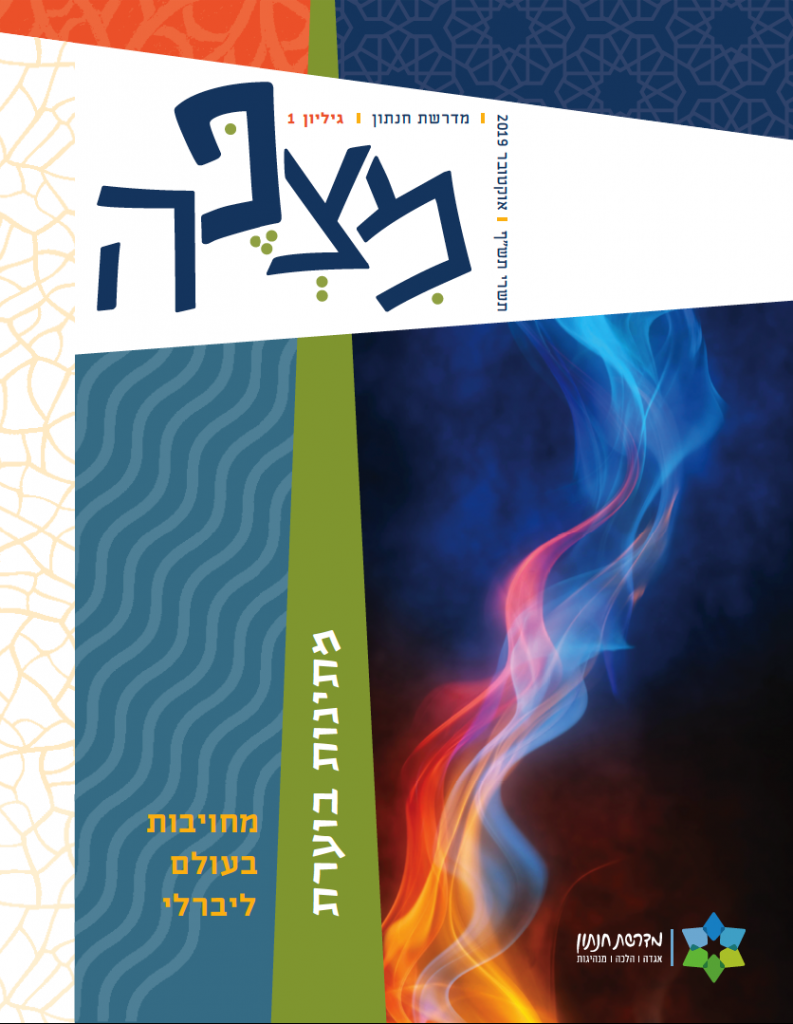The pair of paintings on the following page tell a story about observation and about differing points of view. In each one of them a landscape appears, containing mountains, trees, buildings, and a number of minarets. In the painting on the left there is a fence, behind it wild shrubbery, and in the distance a large city is shrouded in morning haze, with mountains in the background. In the painting on the right we see the same city from up close and in brighter light; on the mountain behind it there is a winding road leading up to houses scattered along its peak. At the bottom of both paintings appears a bannister with a pair of hands. They are my hands, resting on the bannisters of the rooftops of two houses, belonging to the Lulko family from Eshchar and the Tarabieh family from Sachnin. Two houses that look out at one other, both near and far apart.
I live a work in the community of Eshchar in the Galilee, and the landscape from my studio has infused my work for many years, in various ways. Observation of the natural rocky surroundings and the changing light over the course of the day and the seasons is accompanied by observation and thoughts about life in this place, about my physical presence within it, and about the people and structures that populate it. This landscape includes the Hilazon valley, and above it, in the distance, Karmiel and Dier El-Assad. Yet for years I have been curious about the view from the other side of Eshchar, which faces the Arab town of Sachnin. When I looked at the tangle of houses that make up the town, it dawned on me that it would be interesting to see the opposite view: to look at my hometown from Sachnin. I drove around Sachnin many times looking for a spot from which I could paint Eshchar, without success. In the meantime, I found a rooftop in Eschar and began sketching the view from it. It was then that I first noticed the neighborhoods on the southern hilltops of Sachnin, directly across from me, in a beeline from my perch. I immediately drove over there and discovered a breathtaking view. As I pondered where I could find an outdoor spot where I would feel comfortable setting up my easel and working, I turned my car around to descend the steep road and found myself in a narrow parking area leading to a home and yard. While I cautiously tried to turn around and exit, a woman approached to see what I was doing there. I said "I got here by mistake," and for some reason added "I was looking for a place to paint the landscape." Her immediate response, "You can paint on our roof," felt like a miracle. After we ascended to the roof, I said, in a combination of Hebrew and my basic Arabic, "a person thinks of an idea and it seems so complicated, and then suddenly it becomes simple." "It's not at all complicated," responded my new friend Laila.
Perhaps simplicity and complexity are the key words for describing these paintings and the process of their creation. Ostensibly I took on a focused, very basic task: to paint what I see. Even after decades of painting, I am glad that this is still very difficult for me – in other words, I do not do it routinely or with expected results. From both rooftops the urban landscape of Sachnin took up a large segment of my field of vision. The painterly challenge it presented included choosing which details would enter the composition, out of a multitude of windows, solar panels, roads, fences and more. And beyond the challenge of making that selection lay translating these details into a painterly language, into brushstrokes. In addition, I perceived the two paintings as comprising one combined work, which demanded attention to the visual dialogue to be created between them when exhibited together. Other, more external challenges included the wind, the sun, and the suffocating chimney smoke which covered the Sachnin roof on cold winter days. In addition, my daily painting routine lasted around three months that included a number of Covid lockdowns, leading me to wonder whether I could convince a policeman that landscape painting constitutes essential work. All of these challenges forced me to enter a state of full presence and concentration, in order to capture the particular light and color in a relatively short span of time during each painting session, whether in the morning hours in Eshchar, or in the afternoon in Sachnin.
While most of the abovementioned challenges face any landscape painter working outside, here I encountered additional obstacles, such as leaving the comfort zone of my private studio space to the roofs of other people's houses, which generated particular tension in Sachnin, as I was the only Jewish person in the area. This tension was met over and over again with a simple and wholehearted welcome. While in Eshchar I worked while children were in school or daycare, in the afternoons in Sachnin I became an attraction for the neighborhood children. On my arrival, shouts of "Il-fanana!" – the artist! – gathered a group of boys who helped me carry my equipment up to the roof and then watch me paint. After a while I began bringing them paper and poster paints. And another aspect of simplicity: I saw myself in the eyes of these children and their parents as a laborer in painting, a craftswoman coming to work with her folding canvas and materials, at the same time that Leila's husband Youssef arrived home from his plastering work on construction sites. He too, as well as other adult neighbors, were curious to see how I progressed with the painting each day. This feeling of exposure, painting with others watching me and viewing the unfinished work, interestingly echoed what was being created on the canvas itself: the view of my hometown from within and from without. This dual view relates to the basic human experience of seeing and being seen, while asking the following question: what constitutes my landscape – is it the view of my home as others see it, or is it the landscape viewed from within it? My hands resting on the bannister in each of the two paintings hint that the answer is not one or the other but twofold, just as I am present in both views.
If I described the dissonance between the tension I felt in Sachnin and the warm welcome I received there, in a wider sense the disparity between simplicity and complexity was exemplified by the ease and pleasure of working in Sachnin and building connections with the family and neighbors, as opposed to the tumultuous relationship between Jews and Arabs, whose severity became clear soon after I completed the work, in the confrontation and riots of spring 2021. My pair of paintings do not hint at the impending explosion. Nor do they reveal my pessimism about the future of Jewish-Arab relations in Israel, or regarding the greater national and religious conflict. So here is another incongruity: my sense of despair only strengthens my wish to learn and listen, while building relationships on the personal and local levels. And perhaps the view from Sachnin to Eschar includes a call to the residents of Sachnin, inviting them to make an effort at understanding my connection to this place. Thus, rather than representing an avoidance of politics, the Rooftop Paintings may be understood as embodying a necessary prerequisite to any social, religious or political discourse – the visual parallel to listening: observation. Before anything else, simply look.
To see the Rooftop Paintings press here.





